The Golden-browed Chlorophonia is a small, plump bird, with an average length of about 13 cm. Males are strikingly vibrant with bright green plumage on the head and back, a vivid yellow eyebrow, a yellow chest patch, and a purplish-blue crown. Females, in contrast, have green plumage all over and lack the yellow eyebrow and chest patch. Both sexes have thick, short black bills, brown eyes, and short black legs.
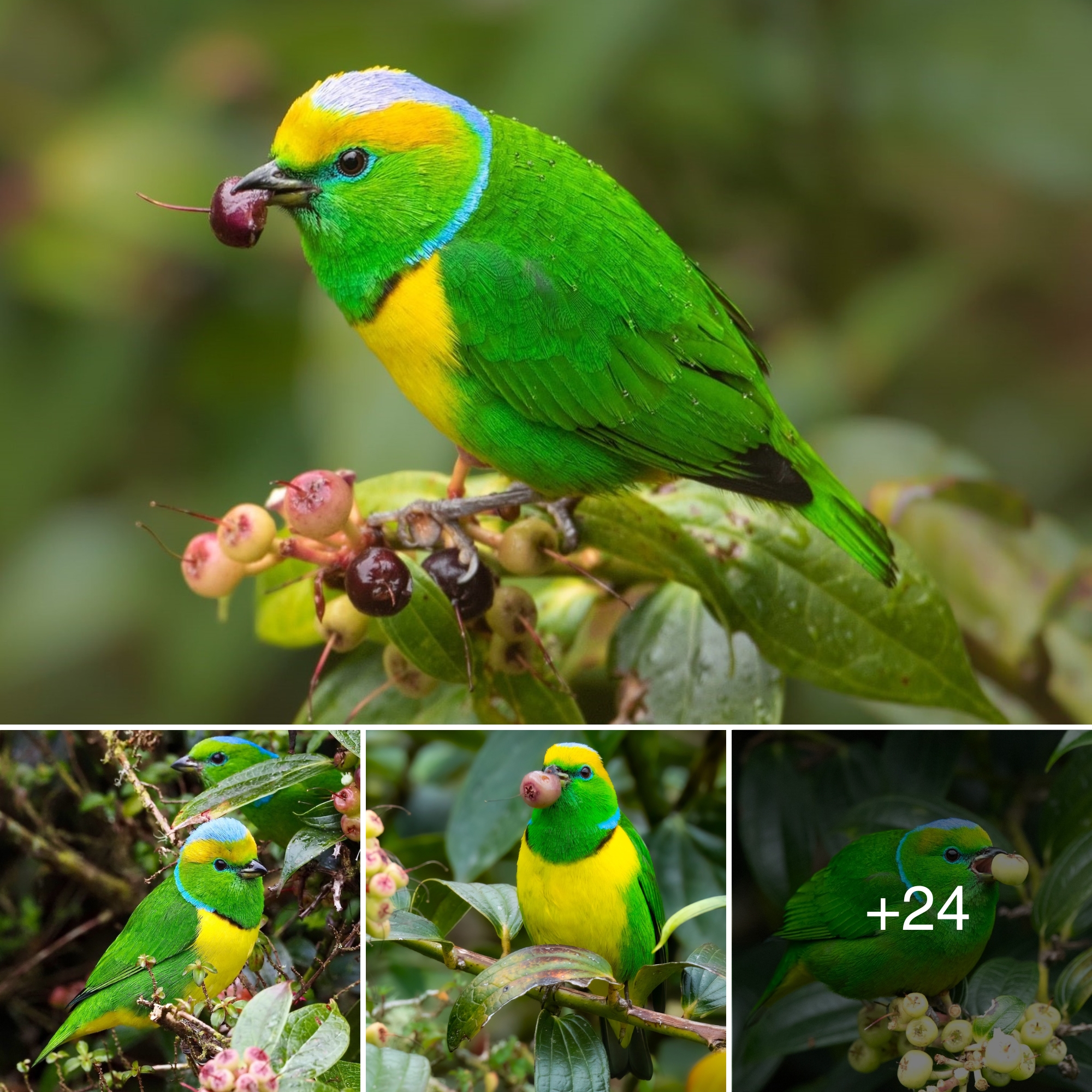
This species inhabits cloud forests and humid tropical forests in Central and South America, primarily found in Costa Rica and Panama. They typically live in pairs or small flocks and are frequently seen moving through tree branches in search of food. The Golden-browed Chlorophonia is known for its sweet and melodious song, which adds a charming sound to its forest habitat.
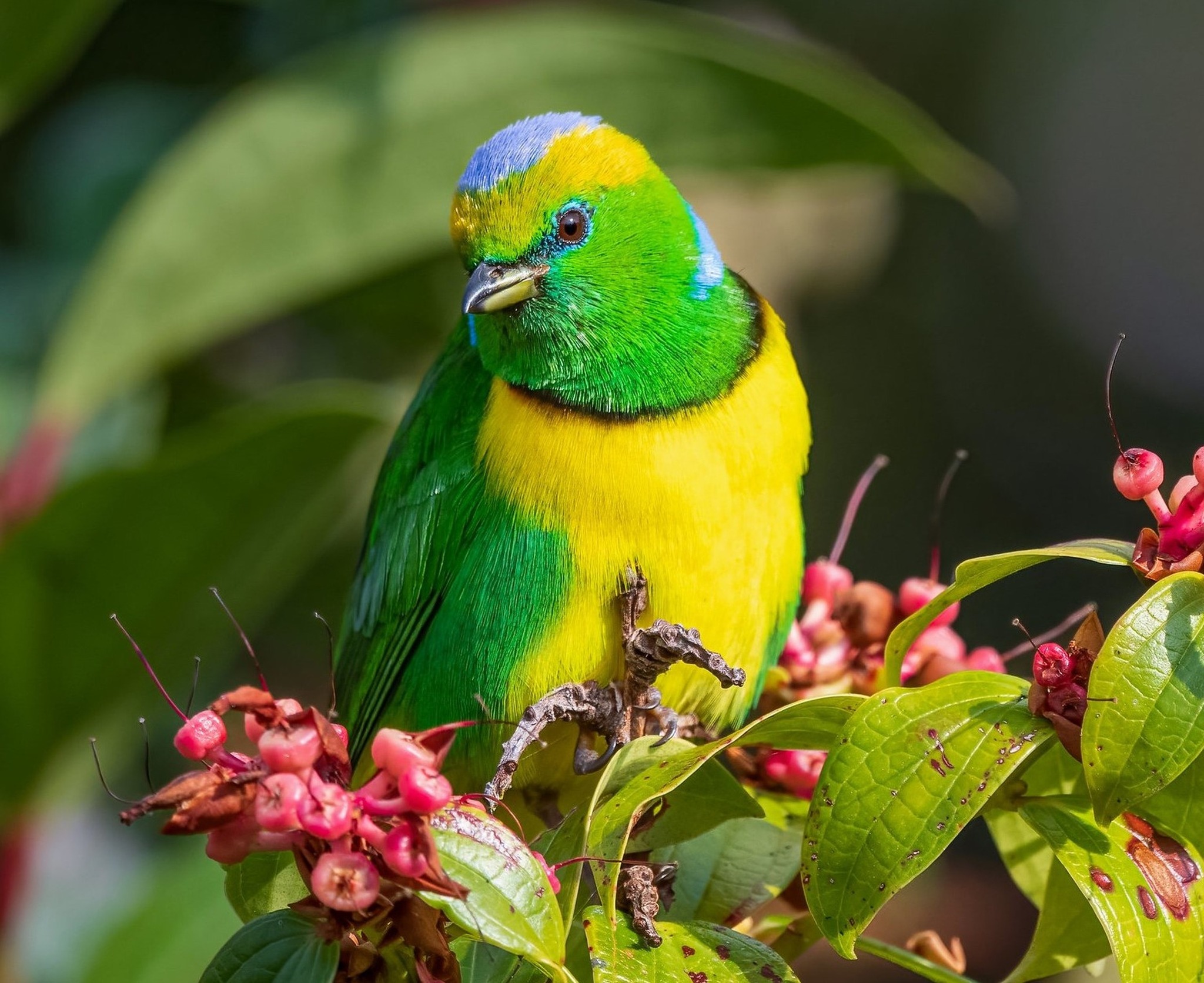

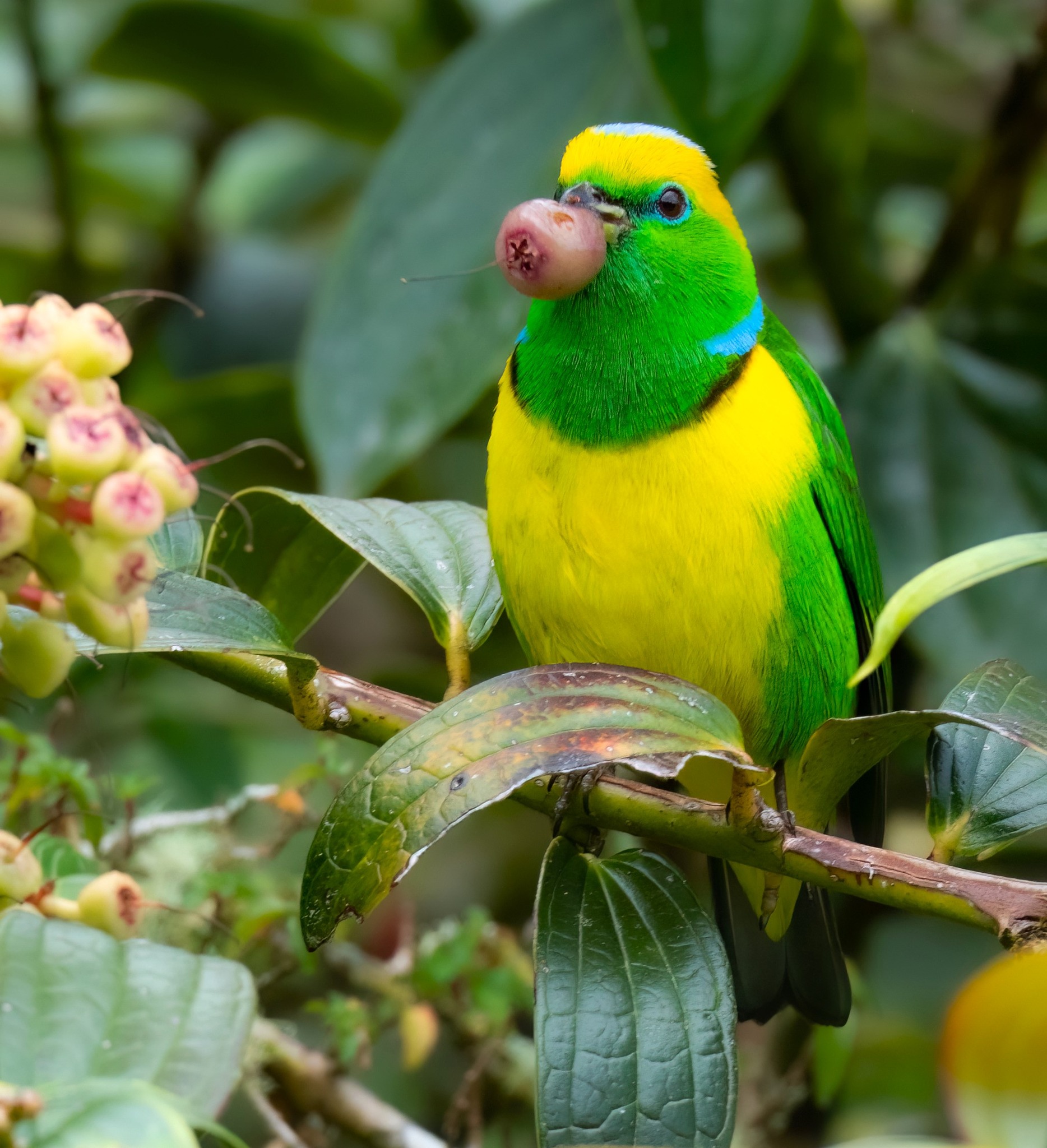
The diet of the Golden-browed Chlorophonia mainly consists of fruits and insects, supplemented occasionally with nectar and seeds. Their breeding season runs from March to August. They build nests using twigs and leaves, lined with moss and soft grasses, and lay 2-3 white eggs speckled with brown per clutch. Both the male and female share the responsibilities of incubating the eggs and caring for the chicks. The eggs hatch in about 12-14 days, and the chicks become independent after approximately 20 days.
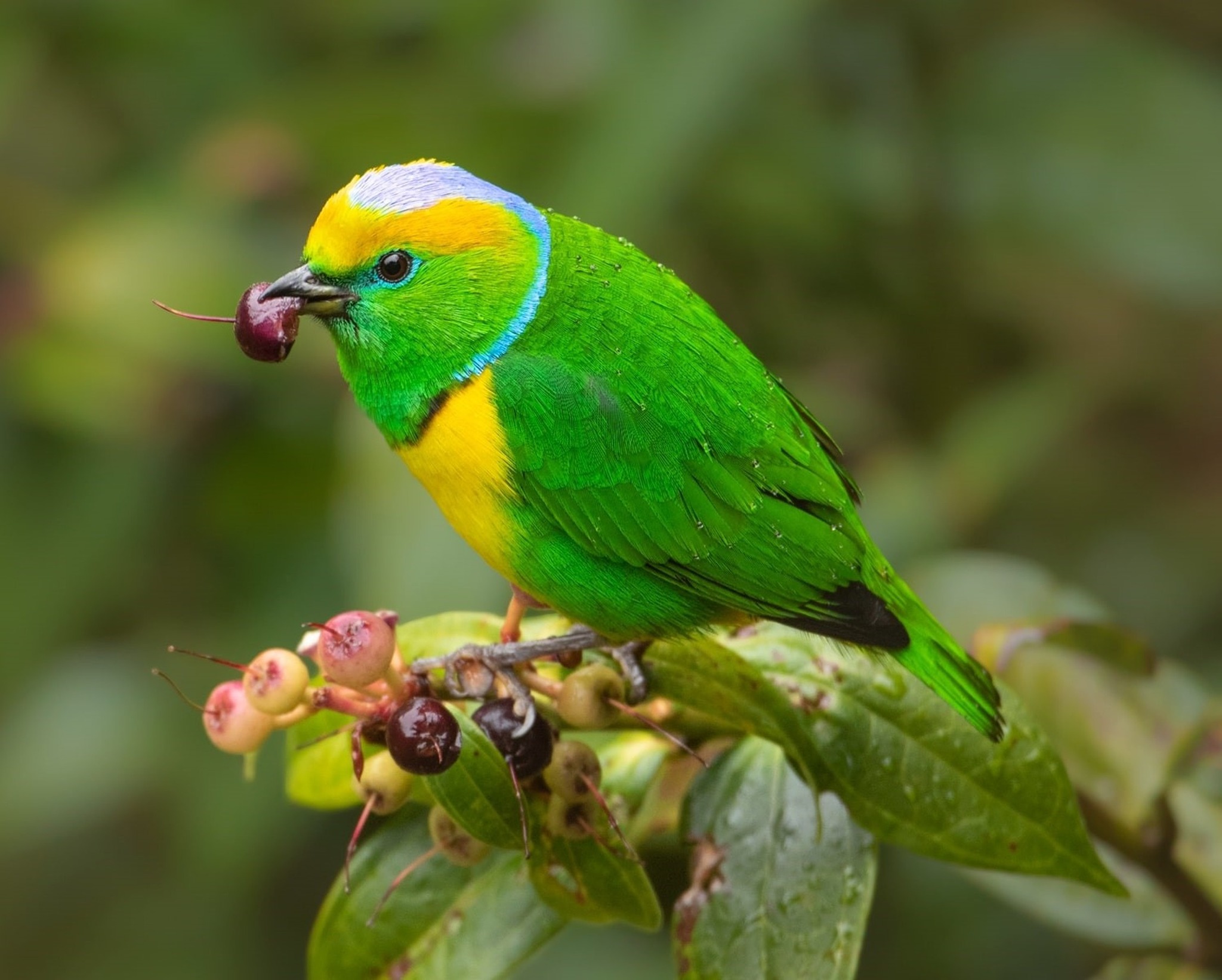
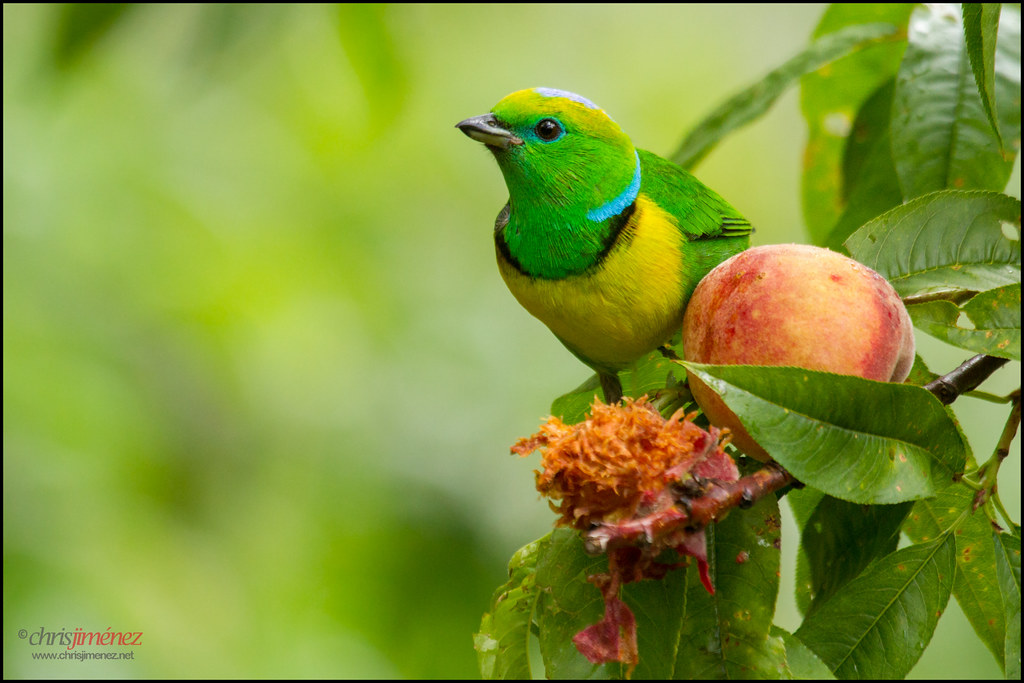
The Golden-browed Chlorophonia is currently classified as Least Concern (LC) on the IUCN Red List, with a stable population trend. This bird is named for the male’s distinctive bright yellow eyebrow. Although commonly referred to as “Chlorophonia,” this bird belongs to the finch family (Fringillidae) rather than the thrush family (Turdidae). It is a common sight in the humid tropical forests of Central and South America, playing a vital role in the ecosystem of these regions.